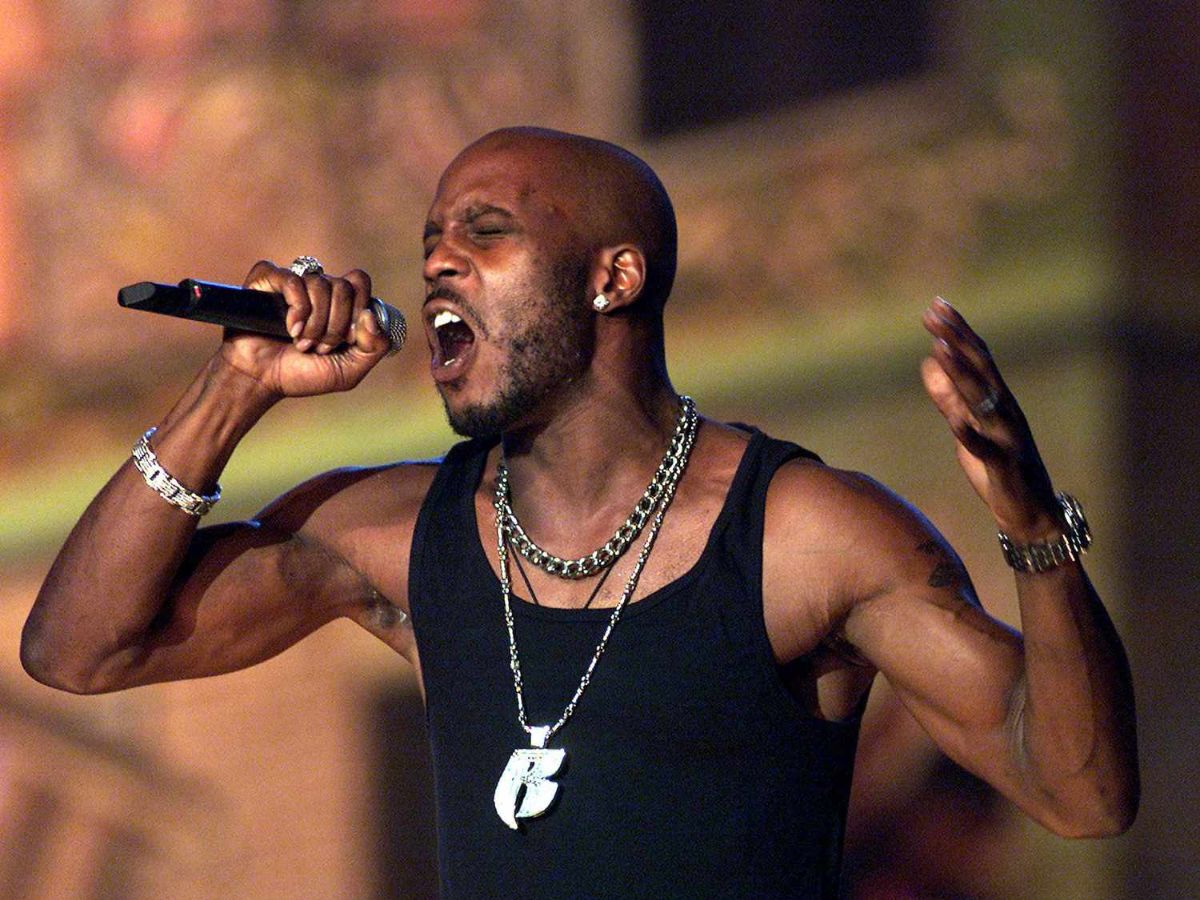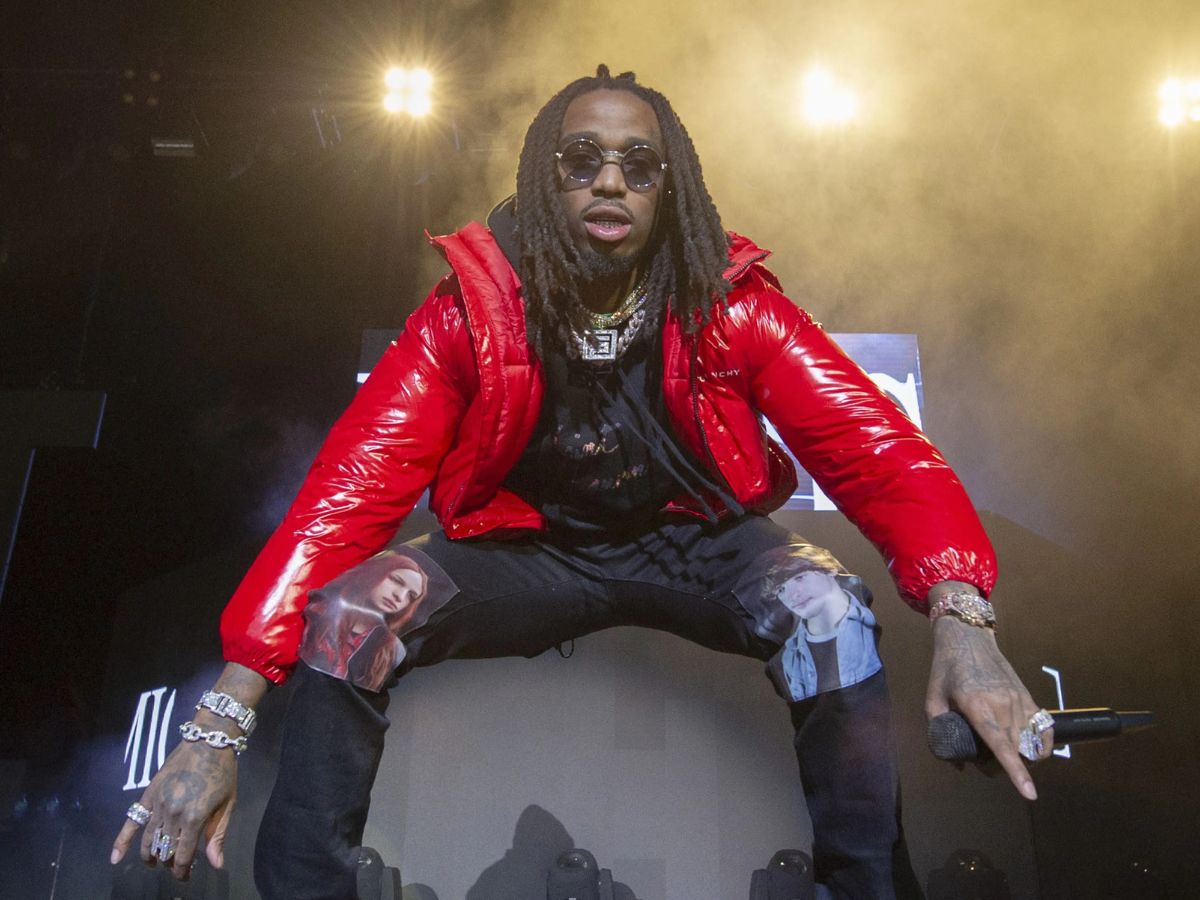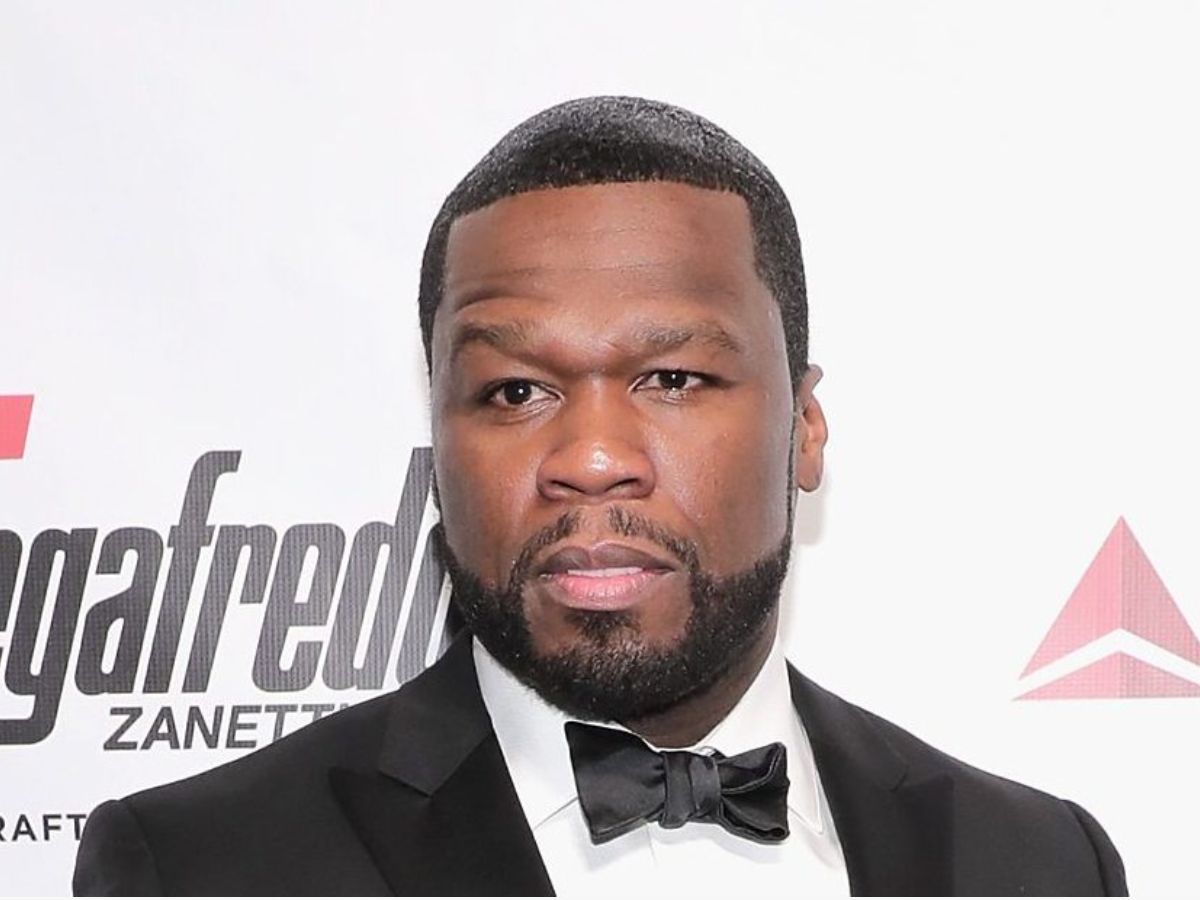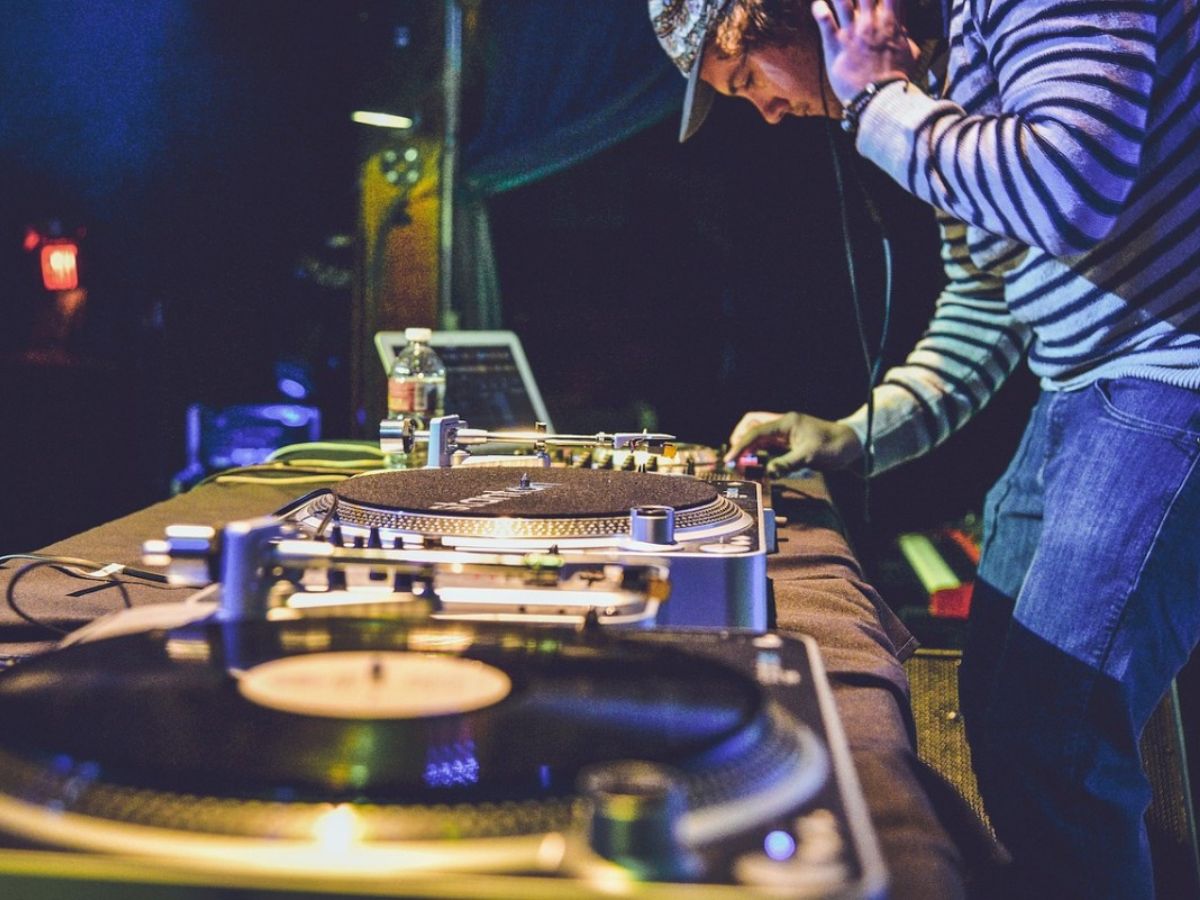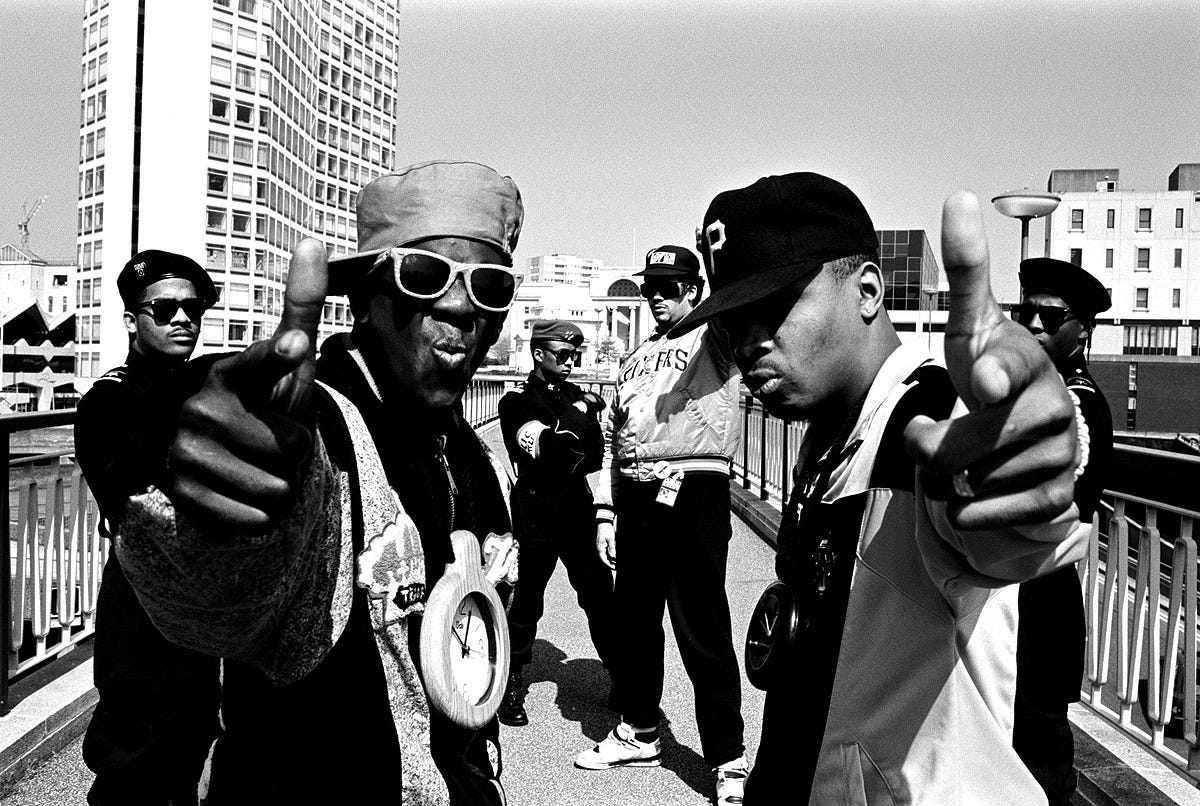

Hip Hop
What Are Bars In Hip Hop
Published: December 30, 2023
Discover the meaning of bars in hip hop and how they contribute to the art form. Explore the essence of hip hop and its intricate lyrical craftsmanship.
(Many of the links in this article redirect to a specific reviewed product. Your purchase of these products through affiliate links helps to generate commission for AudioLover.com, at no extra cost. Learn more)
Table of Contents
Introduction
Hip Hop, a genre that emerged in the 1970s in the Bronx, New York, quickly became a cultural phenomenon and a powerful means of self-expression for marginalized communities. At the heart of Hip Hop lies a unique element known as “bars.” In the context of this genre, bars refer to the fundamental unit of rap lyrics, the building blocks that artists use to construct their verses.
The concept of bars in Hip Hop is deeply rooted in African oral traditions, where storytelling and rhythmic poetry played a vital role. As the genre evolved, bars became an essential part of rap songs, serving as the framework for artists to exhibit their lyrical prowess, convey their messages, and engage listeners in a unique and captivating way.
Bars in Hip Hop can be understood as a measure of time, typically consisting of four beats or counts. Within these four beats, artists deliver their rhymes, utilizing various techniques such as wordplay, metaphors, and storytelling to captivate their audiences. Each bar is carefully crafted to fit the beat and convey a specific message or emotion.
Understanding bars in Hip Hop goes beyond simply counting beats. It involves recognizing the intricate patterns artists employ, the internal rhymes, accentuations, and pauses strategically placed within the verses. By mastering the art of bars, rappers can create memorable verses that resonate with listeners and leave a lasting impact.
In this article, we will delve deeper into the origins, definition, structure, and importance of bars in Hip Hop. We will explore the various techniques and styles used by artists to construct their bars and examine how they have evolved over time. From the early pioneers of the genre to the modern-day rap legends, bars have remained a constant and defining aspect of Hip Hop culture. So, let’s embark on a journey to uncover the intricacies of bars in Hip Hop and appreciate the artistry that lies within.
The Origin of Bars in Hip Hop
The concept of bars in Hip Hop can be traced back to the early days of the genre, when MCs (Master of Ceremonies) would use rhythmic patterns and rhymes to engage and entertain audiences during block parties and street jams in the Bronx.
These MCs, often referred to as “rap battlers,” would engage in friendly competition to showcase their lyrical skills and prowess. To maintain the flow and rhythm of their rhymes, they would break down their verses into smaller segments, known as bars. This allowed them to stay on beat while delivering their rhymes.
The origin of bars in Hip Hop can also be attributed to the influence of African oral traditions and storytelling techniques. The griots of West Africa were known for their rhythmic poetry and melodic storytelling, using repetitive structures to convey their messages. This influence can be seen in the way rappers structure their bars, employing repetition and a recognizable structure within their verses.
As Hip Hop gained popularity and evolved into a recorded form of music, bars became an integral part of rap songs. Artists recognized the importance of staying in sync with the instrumental beats, and breaking down their verses into four-beat segments provided a clear structure that allowed for seamless collaboration with DJs and producers.
One of the early pioneers of utilizing bars in Hip Hop was Grandmaster Caz, a legendary MC who was part of the influential group The Cold Crush Brothers. Caz’s precise and structured delivery set a standard for future generations of rappers, showcasing the power of bars in creating memorable verses.
Over time, as the genre grew and diversified, artists like Rakim, Big Daddy Kane, and Nas emerged, pushing the boundaries of lyrical content and delivery. These artists elevated the use of bars in Hip Hop, incorporating complex rhyme schemes, internal rhymes, and intricate wordplay. Their innovative styles further solidified bars as an essential component of the genre.
Today, bars remain a foundational element in Hip Hop, with artists constantly pushing the boundaries of lyrical mastery. The origin of bars in Hip Hop is deeply rooted in the cultural traditions and artistic expression of marginalized communities, and its evolution continues to shape the genre’s landscape.
Definition and Components of Bars
In the world of Hip Hop, a bar refers to a measure of time within a rap verse. It is a unit of structure that artists use to organize their lyrics and deliver them in sync with the instrumental beats. Generally, a bar consists of four beats, with each beat representing a downbeat or count.
Within these four beats, artists construct their rhymes and craft their verses. Bars allow rappers to maintain the rhythm and flow of their delivery, ensuring that their lyrics align with the musical backdrop. Each bar is like a building block, forming the foundation upon which the entire verse is built.
One of the essential components of a bar is the rhyme scheme. Rhyme scheme refers to the pattern of rhyming words or sounds within the verse. It adds a musical quality to the lyrics and makes them catchy and memorable. Artists often experiment with different rhyme schemes, using internal rhymes, multisyllabic rhymes, and various techniques to create intricate and engaging patterns.
Another crucial component of bars is wordplay. Wordplay involves using clever and creative techniques to manipulate words, meanings, and sounds. It adds depth and complexity to the lyrics, making them more thought-provoking and entertaining. Artists employ wordplay through techniques such as double entendre, similes, metaphors, alliteration, and homophones to enhance the impact of their bars.
The structure of bars also plays a significant role in shaping the overall composition of a rap verse. Bars provide a framework for artists to organize their thoughts and deliver their messages cohesively. They allow for a seamless transition between different ideas and themes within a song, ensuring that the verses flow smoothly and maintain the attention of the listeners.
Furthermore, bars can also include pauses and cadences that add emphasis and dynamics to the delivery. Artists utilize these pauses strategically to create suspense, build anticipation, or highlight particular lines or punchlines. These pauses and cadences, often referred to as “flow,” contribute to the overall rhythm and vibe of the song.
Overall, the definition and components of bars in Hip Hop encompass the structural and creative elements that rappers use to construct their verses. It is the fusion of rhythm, rhyme, wordplay, and structure that gives bars their distinct and captivating nature.
Structure and Format of Bars
The structure and format of bars in Hip Hop are crucial aspects that determine the flow and impact of a rap verse. Understanding the organization within bars allows for a deeper appreciation of the technical skills and artistry involved in constructing powerful verses.
Typically, a bar in Hip Hop consists of four beats, with each beat lasting approximately one count. This four-beat structure provides a rhythmic foundation for the lyrics to align with the instrumental beats. Artists carefully craft their rhymes to fit within these beats, maintaining the rhythm and flow of their delivery.
Within a bar, rappers often employ a specific pattern in their rhymes, known as a rhyme scheme. Rhyme schemes can vary, but common patterns include AABB, ABAB, and ABBA. These patterns help create a sense of cohesion and musicality within the verse, making it easier for listeners to follow the flow of the lyrics.
Furthermore, each beat within a bar can be further divided into smaller fractions, known as subdivisions. These subdivisions allow for more precise delivery and accentuations within the verse. Artists may opt to place rhymes or emphasize certain words or phrases on specific subdivisions to create a unique cadence or add emphasis to their bars.
In terms of format, bars in Hip Hop are often written and presented in a line-by-line structure. Each line represents one bar, with the rhymes and content organized accordingly. This format enables artists to visualize the structure of their verses and ensure that their lyrics align with the instrumental beats.
Artists also utilize a variety of techniques and styles to enhance the structure and format of their bars. They may incorporate internal rhymes, where multiple rhyming words appear within the same bar, adding complexity and depth to the lyrics. Additionally, artists may employ enjambment, which involves carrying a sentence or phrase across multiple bars, creating a continuous flow of thought and avoiding abrupt breaks in the verse.
The structure and format of bars allow artists to shape their verses creatively while staying in sync with the rhythm and musicality of the song. It provides a framework for organizing thoughts and conveying messages effectively, while also facilitating the seamless collaboration between rappers, producers, and DJs.
In summary, the structure and format of bars in Hip Hop are integral to the composition and delivery of rap verses. Understanding the organization within bars unlocks a deeper appreciation for the technical skills and artistic choices made by rappers, resulting in the creation of powerful and impactful music.
Importance and Functionality of Bars in Hip Hop
Bars in Hip Hop serve a multitude of purposes and play a vital role in the genre’s lyrical composition and overall impact. Understanding their importance and functionality allows for a deeper appreciation of the artistry and storytelling capabilities within rap music.
One of the primary functions of bars in Hip Hop is to provide a rhythmic structure and flow to the lyrics. They serve as a framework that allows artists to stay in sync with the instrumental beats and maintain a consistent rhythm throughout their verses. By adhering to the four-beat structure of each bar, rappers ensure a seamless and harmonious integration of their rhymes with the musical backdrop.
Bars also play a crucial role in the delivery of messages and storytelling within Hip Hop. They allow artists to organize their thoughts and convey their emotions and experiences in a coherent and impactful way. The structure of bars enables the artist to seamlessly transition between different ideas, themes, and narrative arcs within a song, creating a cohesive and engaging listening experience for the audience.
Furthermore, bars in Hip Hop provide an opportunity for artists to showcase their lyrical skills, wordplay, and creativity. By breaking down their verses into smaller segments, rappers can craft intricate rhyme schemes, clever metaphors, and memorable punchlines. The structure of bars allows for precise timing and delivery of these lyrical elements, adding depth and complexity to their verses.
Bars also serve as a vehicle for self-expression and storytelling in Hip Hop. Through the careful arrangement of words and phrases within each bar, artists can paint vivid pictures, evoke emotions, and share personal stories. The structure of bars allows for the rhythmic and melodic qualities of rap to enhance the impact of the lyrics, creating a powerful and relatable connection with listeners.
Moreover, bars are integral to the collaborative nature of Hip Hop. They provide a standardized format that enables seamless collaboration between rappers, producers, and DJs. The structure of bars allows for easy synchronization and coordination between different elements of a song, resulting in a cohesive and well-structured musical piece.
Overall, the importance and functionality of bars in Hip Hop cannot be overstated. They provide a rhythmic foundation, allow for precise delivery of lyrics, facilitate storytelling, showcase lyrical skills, and enable seamless collaboration. The mastery of bars is a testament to the artistry and creativity within the genre, making them an essential and defining element of Hip Hop music.
Common Techniques and Styles of Bars
Bars in Hip Hop encompass a wide range of techniques and styles that artists employ to captivate listeners and showcase their lyrical prowess. These techniques and styles contribute to the creativity and diversity within the genre, allowing for unique and innovative approaches to rap verses. Here are some common techniques and styles of bars in Hip Hop:
- Wordplay: Wordplay is a popular technique used in bars, involving the clever manipulation and use of words to create double meanings, metaphors, similes, and puns. Rappers utilize wordplay to add depth, wit, and complexity to their lyrics, engaging listeners with their linguistic dexterity.
- Multisyllabic Rhymes: Multisyllabic rhymes involve using rhyming words with multiple syllables in a single bar, creating intricate and impactful patterns. This technique requires careful consideration of syllable structures and emphasizes the artist’s ability to weave together rhymes seamlessly.
- Punchlines: Punchlines are clever and often humorous lines that deliver a surprise or witty twist, leaving a lasting impact on the listener. They are typically found at the end of a bar and are designed to elicit reactions such as laughter, awe, or admiration.
- Internal Rhymes: Internal rhymes are rhyming words or sounds that occur within the same bar, adding complexity and musicality to the lyrics. This technique enhances the rhythmic flow of the verse and creates a more intricate and memorable listening experience.
- Alliteration: Alliteration involves the repetition of consonant sounds within a bar, creating a musical and rhythmic effect. It adds a poetic quality to the lyrics and makes them more engaging and memorable.
- Metaphors and Similes: Metaphors and similes are powerful figurative language devices used in bars to make comparisons and create vivid imagery. They allow artists to convey complex ideas and emotions in a relatable and impactful manner.
- Storytelling: Bars can also be used as a means of storytelling, allowing artists to share personal experiences, social commentary, or fictional narratives. Rappers often use descriptive language, vivid imagery, and engaging storytelling techniques to captivate listeners and convey their message.
These are just a few examples of the common techniques and styles of bars in Hip Hop. Artists often combine multiple techniques, develop their unique styles, and innovate the genre’s lyrical landscape. The mastery of these techniques is a testament to the artistic prowess and creativity within Hip Hop culture, contributing to the genre’s rich and diverse tapestry.
Evolution and Changes in Bars in Hip Hop
Bars in Hip Hop have evolved and undergone significant changes throughout the history of the genre. From its early beginnings in the 1970s to the present day, the art of constructing bars has constantly evolved, reflecting changing musical trends, cultural shifts, and the innovative approaches of artists.
In the early days of Hip Hop, bars were relatively straightforward and focused on maintaining a consistent flow and rhythm. MCs would use simple rhyme schemes and direct storytelling to engage listeners. However, as the genre gained prominence and the lyrical capabilities of artists expanded, the complexity and creativity within bars grew exponentially.
The 1980s saw the emergence of artists like Rakim, who revolutionized the use of bars in Hip Hop. Rakim introduced intricate rhyme schemes, multisyllabic rhymes, and internal rhymes, setting new standards for lyrical depth and complexity. His contributions laid the foundation for a new era of lyrical mastery in Hip Hop.
In the 1990s, artists like The Notorious B.I.G., Nas, and Wu-Tang Clan further pushed the boundaries of bars in Hip Hop. They brought a more vivid storytelling approach, weaving intricate narratives within their verses. These artists also popularized the use of multisyllabic rhymes and intricate wordplay, elevating the technical skills required in constructing bars.
As Hip Hop entered the new millennium, the landscape of bars continued to evolve. Artists like Eminem, Kendrick Lamar, and Lupe Fiasco introduced new perspectives and styles, combining complex wordplay with introspective and socially conscious lyrics. This era saw the emergence of punchline-heavy bars, where clever wordplay, metaphors, and cultural references were used to deliver impactful and memorable lines.
With the advent of the internet and the rise of digital platforms, the accessibility of music and the creation of rap verses has changed. Artists could experiment with different flows, rhyme schemes, and delivery styles. This era saw the emergence of artists like J. Cole, Drake, and Kendrick Lamar, who merged traditional lyrical skills with melodic elements and diverse musical influences.
Today, bars in Hip Hop continue to evolve and incorporate elements from different musical genres. The rise of trap and mumble rap introduced new styles and flows, focusing more on the overall vibe and energy of the songs. However, there are still artists who prioritize complex lyricism and maintain the traditions of intricate bars.
The evolution of bars in Hip Hop is a testament to the genre’s adaptability and the creativity of its artists. While the fundamental techniques and structures of bars remain, artists continuously experiment, innovate, and push the boundaries of what is possible within a rap verse. This ongoing evolution ensures that Hip Hop stays vibrant, relevant, and reflective of the ever-changing artistic landscape.
Notable Examples of Bars in Hip Hop Songs
Throughout the history of Hip Hop, numerous songs have showcased remarkable examples of bars, demonstrating the artistry, creativity, and lyrical craftsmanship within the genre. Here are a few notable examples of bars in Hip Hop songs:
- “Juicy” – The Notorious B.I.G.
Example Bar: “Birthdays was the worst days, now we sip champagne when we thirstay” - “C.R.E.A.M.” – Wu-Tang Clan
Example Bar: “Cash rules everything around me, C.R.E.A.M., get the money, dollar dollar bill, y’all” - “Lose Yourself” – Eminem
Example Bar: “Palms are sweaty, knees weak, arms are heavy, there’s vomit on his sweater already, mom’s spaghetti” - “N.Y. State of Mind” – Nas
Example Bar: “I never sleep, ’cause sleep is the cousin of death, beyond the walls of intelligence, life is defined” - “Rigamortus” – Kendrick Lamar
Example Bar: “I’m Marcellus, reincarnated, soon as I grab the pen and I write a sentence” - “Rapper’s Delight” – The Sugarhill Gang
Example Bar: “Now what you hear is not a test, I’m rappin’ to the beat, and me, the groove, and my friends are gonna try to move your feet” - “Dear Mama” – Tupac
Example Bar: “There’s no way I can pay you back, but my plan is to show you that I understand, you are appreciated”
These are just a few examples that highlight the diverse range of lyrical brilliance found in Hip Hop. Each example showcases different aspects of bars, including storytelling, wordplay, metaphors, and memorable punchlines.
Notably, the lyrics in these songs not only demonstrate technical skill but also convey powerful messages and emotions. They serve as a testament to the ability of bars to capture the essence of personal experiences, social commentary, and cultural narratives.
It’s important to note that these examples merely scratch the surface of the vast catalog of bars in Hip Hop. The genre is filled with countless influential songs and verses that have left an indelible mark on both the culture and the art form itself.
By studying and appreciating these notable examples, we gain a deeper understanding of the artistry and impact of bars in Hip Hop, as well as the immense talent and creativity within the genre.
Conclusion
Bars in Hip Hop are more than just a structural element; they are the building blocks of lyrical expression and storytelling within the genre. From the early days of rap battles and block parties to the modern era of digital streaming and global recognition, bars have remained a fundamental and defining aspect of Hip Hop.
Through the evolution of Hip Hop, bars have continually evolved, pushing the boundaries of lyrical craftsmanship and creativity. Artists have utilized various techniques and styles, showcasing their mastery of wordplay, rhyme schemes, storytelling, and metaphors. Notable examples from legends like The Notorious B.I.G., Wu-Tang Clan, Eminem, Nas, Kendrick Lamar, and Tupac highlight the immense talent and impact of bars in the genre.
Bars in Hip Hop serve multiple functions, providing a rhythmic structure, aiding in storytelling, conveying emotions and messages, and allowing for meaningful collaborations. They are the vessels through which artists express their experiences, perspectives, and cultural commentary while engaging and resonating with audiences across the globe.
The importance of bars in Hip Hop cannot be understated. They lay the foundation for the artistry and technical skill required to craft powerful verses, and they contribute to the cultural impact and identity of the genre. Bars serve as a medium for self-expression, social commentary, and the preservation of oral traditions in a modern musical landscape.
As Hip Hop continues to evolve and adapt, one thing remains constant: the significance of bars. They continue to inspire artists and captivate listeners, representing the heart and soul of the genre. From block parties in the Bronx to global stages and platforms, bars in Hip Hop represent the triumphs, struggles, stories, and dreams of marginalized communities, making it one of the most influential and resilient art forms in history.
So, the next time you listen to your favorite Hip Hop track, take a moment to appreciate the intricacies and artistry within the bars, recognizing the power they hold in shaping the world of Hip Hop and leaving a lasting impact on the culture.



